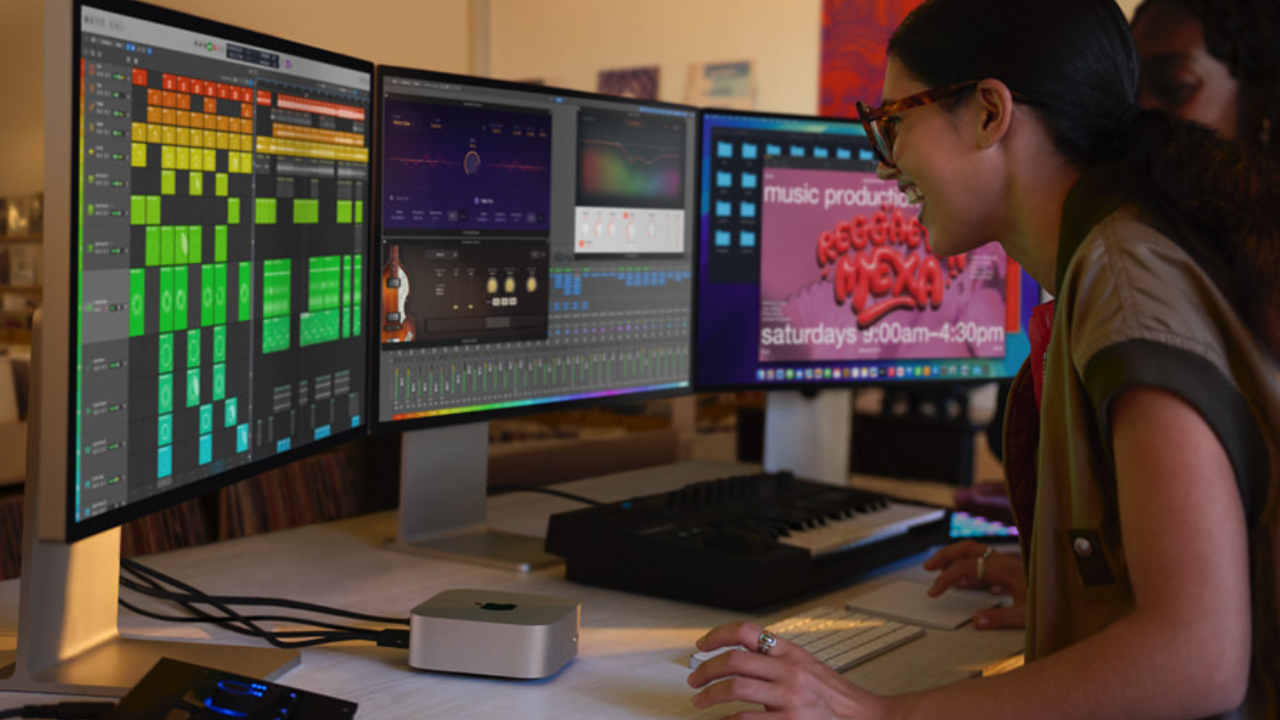Apple once again raises the bar with its redesigned Mac Mini, a desktop powerhouse now outfitted with the new M4 chip. This latest version showcases a remarkable blend of compact design and potent performance, signaling a leap in Apple’s commitment to miniaturized yet robust computing. With new capabilities like enhanced graphics processing, extended RAM options, and an advanced port configuration, this iteration of the Mac Mini is poised to appeal to tech enthusiasts, professionals, and Apple fans alike.
This in-depth exploration covers everything you need to know about the Mac Mini’s design, performance, specs, and impact on the industry, diving into why Apple’s smallest desktop may be one of its biggest releases yet.
Table of Contents
A Radical Redesign: Small and Mighty
Apple’s Mac Mini has maintained a consistent form factor for over a decade, initially recognized for its sleek yet unassuming design. The newest model, however, marks a significant design overhaul. The 2023 Mac Mini with the M4 chip measures just five inches in both length and width — a feat that makes it one of the smallest high-performance desktops on the market. This compact size redefines expectations for desktop computing, making it ideal for users who prioritize space-saving without compromising on functionality.

Apple achieved this compactness without sacrificing performance, thanks to the M4’s advanced efficiency. The M4 chip’s architecture is engineered to keep the device cool even in this reduced form factor, employing what Apple describes as an “innovative thermal architecture.” Airflow is guided through different levels of the system, ensuring efficient cooling, with all venting occurring through the bottom “foot” of the device. This design enables the Mac Mini to run at high performance levels without overheating, even under heavy use.
The M4 Chip: Efficiency Meets Power
At the heart of the new Mac Mini is Apple’s M4 silicon, a powerful upgrade from previous generations. The M4 chip is an evolution in Apple’s line of custom-built processors, focusing on delivering a blend of power and energy efficiency that positions it above competitors.
The standard Mac Mini with the M4 processor features an 8-core CPU and 10-core GPU, offering a leap in speed and processing power compared to its predecessors. For users requiring even greater performance, Apple offers the M4 Pro variant, equipped with 14 CPU cores and a 20-core GPU. This expanded power makes the M4 Pro capable of handling tasks like video editing, 3D rendering, and other processor-intensive applications with remarkable ease.

In an exciting new addition, Apple has integrated ray tracing capabilities into the M4 chip, a first for the Mac Mini. This feature enhances the system’s graphics, providing more realistic lighting and shadow effects that are especially useful for gaming, design, and visual content creation. With this, the M4 Mini steps into territory traditionally reserved for higher-end desktops, showcasing that small size doesn’t mean small capabilities.
Performance and Memory Configurations
The new Mac Mini comes standard with 16GB of RAM, a substantial upgrade that establishes it as a highly capable entry-level machine. For users who require more memory, the M4 processor can be configured with up to 32GB of RAM, while the M4 Pro variant supports up to 64GB. These options allow the Mac Mini to handle multiple demanding applications simultaneously, making it a suitable choice for both casual and professional users.
Storage is another area where the new Mac Mini shines. The base model comes with a modest 256GB SSD, but users can opt for up to 8TB of storage — a significant capacity that supports large media libraries, software installations, and expansive creative projects. This level of customization transforms the Mac Mini from a compact desktop into a true workstation capable of supporting professional workflows.
Enhanced Connectivity: A Focus on Future-Proofing
Apple has made notable adjustments to the Mac Mini’s port configuration, focusing on the latest connectivity standards. The front of the device includes two USB-C ports and a 3.5mm audio jack, offering quick access for everyday peripherals. The rear houses an ethernet port, an HDMI port, and three USB-C/Thunderbolt ports. Notably, the traditional USB-A ports have been removed, reflecting Apple’s continued commitment to a USB-C future.
The upgraded Thunderbolt configuration distinguishes the two M4 models. The standard M4 Mac Mini includes Thunderbolt 4 ports, while the M4 Pro variant is equipped with Thunderbolt 5, delivering the highest available throughput and supporting faster data transfer speeds. This Thunderbolt 5 upgrade is crucial for professionals who regularly work with large files or need fast peripheral connections. Additionally, 10-gigabit ethernet is available as an optional upgrade, catering to users with high-bandwidth networking needs.
Design Philosophy: Minimalism and Functionality
Apple’s focus on minimalist design extends to the Mac Mini’s aesthetics and user experience. Despite the reduction in size, Apple has maintained the device’s iconic aluminum body, offering a streamlined look that fits seamlessly into any setup. The reduced footprint not only saves space on the desktop but also allows for greater flexibility in terms of placement and portability. For users who value both form and function, the new Mac Mini is a quintessential Apple device, balancing design and performance in an elegant, compact package.
User Experience: Ideal for Everyday and Professional Use

While the Mac Mini has historically been viewed as an entry-level option in Apple’s desktop lineup, the addition of the M4 chip repositions it as a competitive device for both casual users and professionals. Everyday tasks, such as browsing, word processing, and video streaming, are handled effortlessly by the M4, with performance that exceeds previous Mac Mini models.
The M4 Pro variant takes things further, enabling users to run intensive applications like Adobe Creative Suite, Final Cut Pro, and Blender without significant slowdowns. This capability makes the Mac Mini a viable option for creative professionals who need high performance but prefer the flexibility and size of a compact desktop. Additionally, the inclusion of ray tracing and Thunderbolt 5 support means that even 3D and VR developers have a new tool in their creative arsenal.
